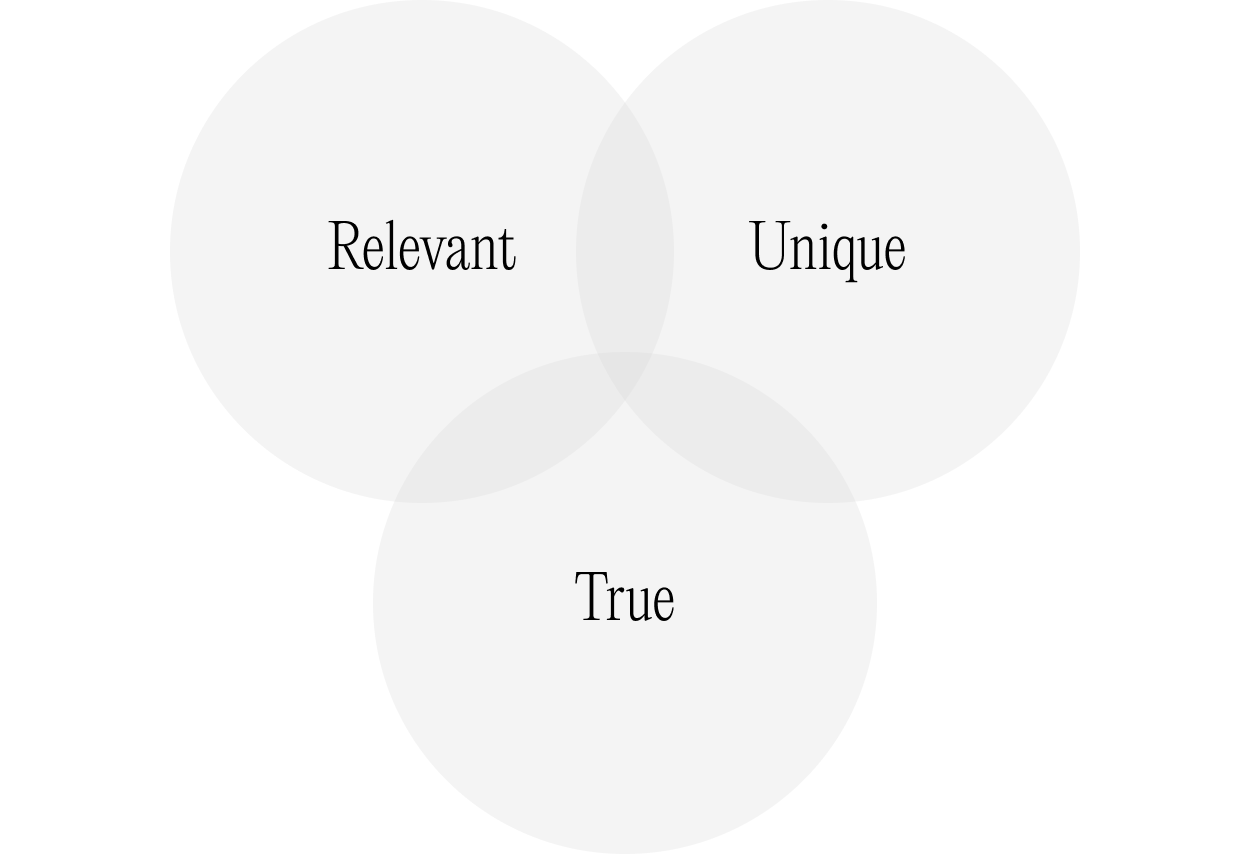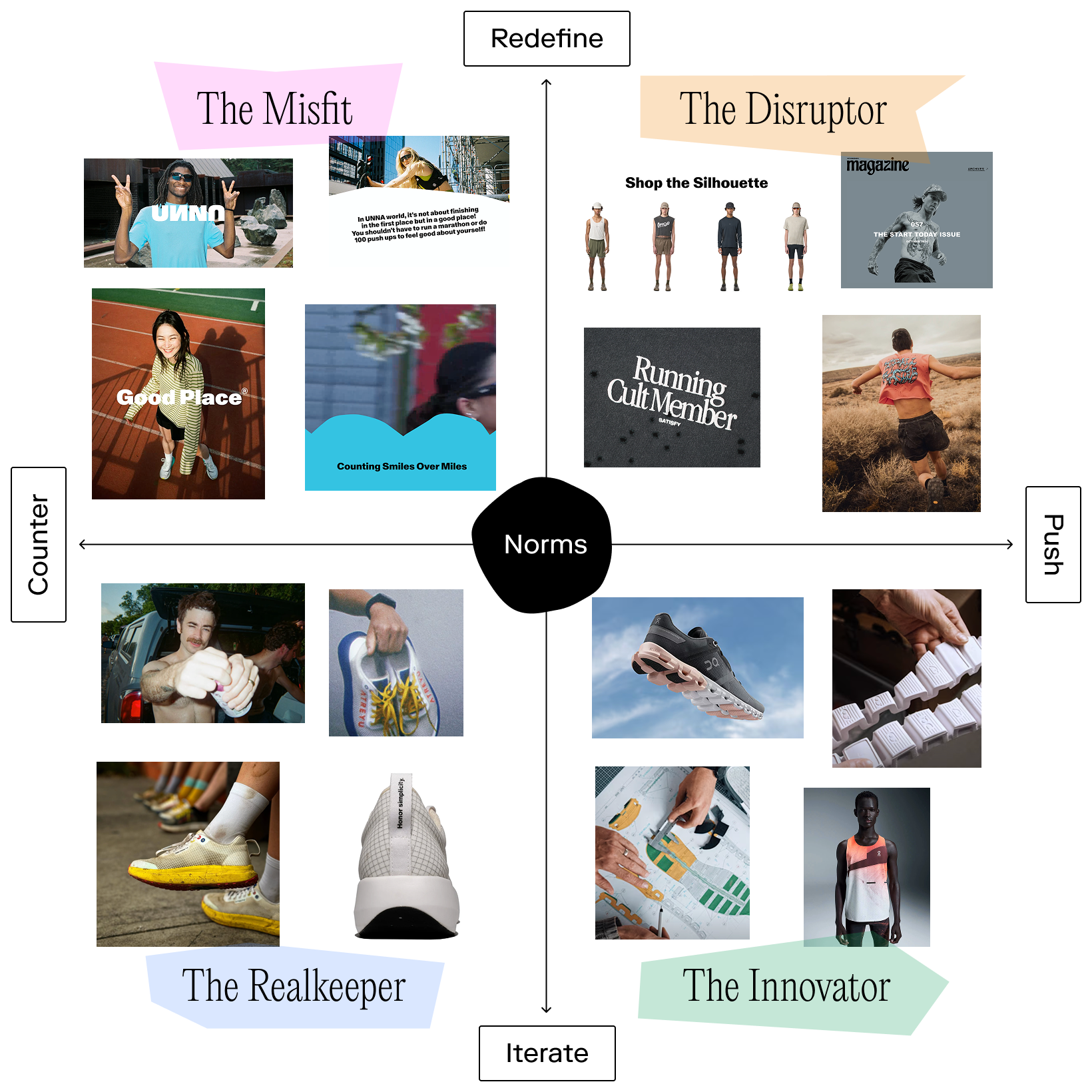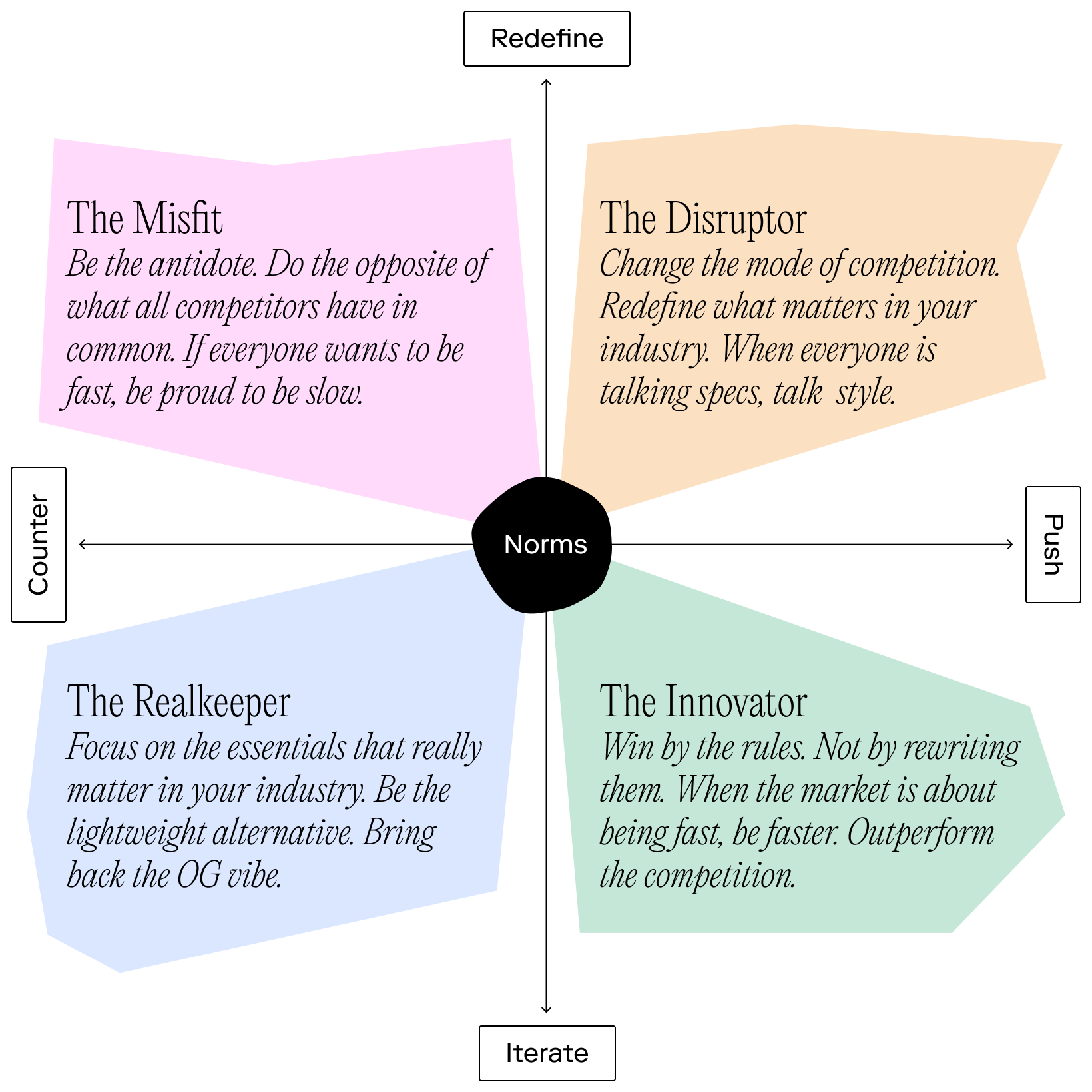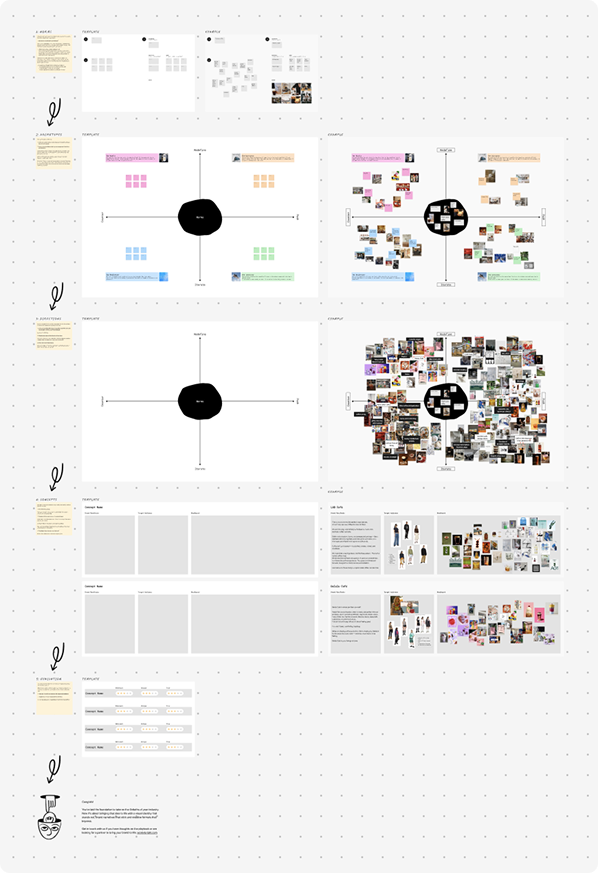Challenger Brand Framework
Understand how successful challenger brands stand out — and what it needs to build the next one.

We don’t have a sweet spot for an industry but for a certain type of organization: challengers.
Because it’s inspiring to work with companies that question industry norms. With those who play attack not defense by default. With the Davids, going for the Goliaths.
But also because branding challengers is an exciting strategic and creative, yes, challenge.
The Challenger Dilemma: How To Stand Out Without Being Off
Most markets today are overly crowded. No one is waiting for a new player to come in. To win as a challenger brand, you need to find your niche from where you can thrive.
Finding that niche is about nailing your positioning, defining your brand's raison d'être by answering one key question „How do we add value in the space we’re operating in?“.



The answer to this question has to be relevant, unique, and true. Relevant because the value you create must matter to a big enough group of customers. Unique because the value you create must be original, not just an echo of the competition. True because your product must be able to deliver what your brand promises.
In the creative part of branding, the challenge is to craft narratives and create a visual identity that lets you stand out without being off.
Again, this is about being relevant, unique, and true. Relevant because your brand must resonate with a big enough part of the audience in your market. Unique because your identity must to be different from the competition to make your brand stand out. True because your identity has to fit your product and organization.
A Compass for Challenger Brands in Crowded Markets
Being obsessed with challenger brands, we observed a lot of them in various markets (check our reports on challenger brands in running, cycling, fragrances, and supplements)
The research revealed two interesting pattern:
1 | Successful challenger brands either iterate on or redefine the dimensions that matter in their market. Iterating means creating value in a new way on the same dimensions as the competition. Redefining means changing the dimensions that matter.
2 | Successful challenger brands differentiate from established players by either countering or pushing what is considered good in their industry. Countering means attacking competition by going back to the basics, stripping things down, celebrating contrarianism. Pushing means innovating, introducing new ideas, and breaking new ground.
When you combine these two pattern, you come up with a beautiful 2x2 map with challenger brand archetypes in each corner.

There Is Always More Than One Niche
In most markets, there is a room for more than one successful challenger brand. Let’s take the running market as an example. Over the last 10 years, running evolved from a monolithic market to a diverse niche brand universe with compelling variations of every challenger brand archetype.



On, now one of the dominating brand in the market, started back in 2010 as an innovator. Competition in the running market was and still is mainly about performance and technology. On entered the market innovating on exactly these dimensions with its groundbreaking Cloud technology.
Atreyu is a lovely example for a realkeeper brand. They compete with the big players and their extensive portfolios through a small lineup and products that focus on the essentials. Atreyu is the runner’s running brand, promising nothing but a really good shoe without any gimmicks.
Unna is a typical misfit. When they launched, the entire running market was about performance and chasing a new personal best. Unna turned the table and celebrated the joyful and mindful aspects of running. In their world, running is not about finishing in first place but in a good place.
Satisfy on the other hand changed the dimension of competition. They made running about style, not speed. While style was always a relevant dimension in running (think Nike’s Gyakusou line in collaboration with Japanese boutique brand Undercover), it was never front and center. Satisfy found it’s niche in the growing running market by doubling down on the fashion path.
How to Build the Next Challenger Brand
We condensed our learnings from observing and building successful challenger brands into a hands-on playbook for creating new ones.



This five-step process guides us through the development of unique challenger brand concepts. Get the free FigJam template.



1 | Norms: It all starts with understanding the norms in your industry: Which are the dimensions the established brands compete on? In which direction is everyone going? What is generally considered as good in your market?
2 | Archetypes: In the second step, we imagine how the challenger archetypes could look and sound like in your industry. Depending on your organization and the market, some archetypes might make no sense at the end. But we almost every time uncover niches in markets that we haven’t had thought of before.
3 | Directions: By now, we usually look at a nice, messy board with a lot of loose ideas and references. Now it’s time to go deeper and refine. We identity potential directions for your brand and elaborate them with more specific references and sharper language. At the end, we collaboratively select the most promising directions.
4 | Concepts: In the fourth step, we flesh the selected directions out. We write a manifesto for the potential brand. We describe the people that would choose your brand over the rest of the market and make the concpot tangible with a moodboard where we collect visual references and sketch ideas.
5 | Evaluation: Our concepts are now concrete enough to decide which one we should bring to life. As initially stated, this step is about answering one question: “Which of these concepts could be the starting point for a brand that is relevant, unique and true?”
Now, the real work and fun starts: We bring that brand to life with a visual identity that stands out, narratives that stick, and creative formats that make a difference.
You’re looking for a partner to challenge the norms of your industry?